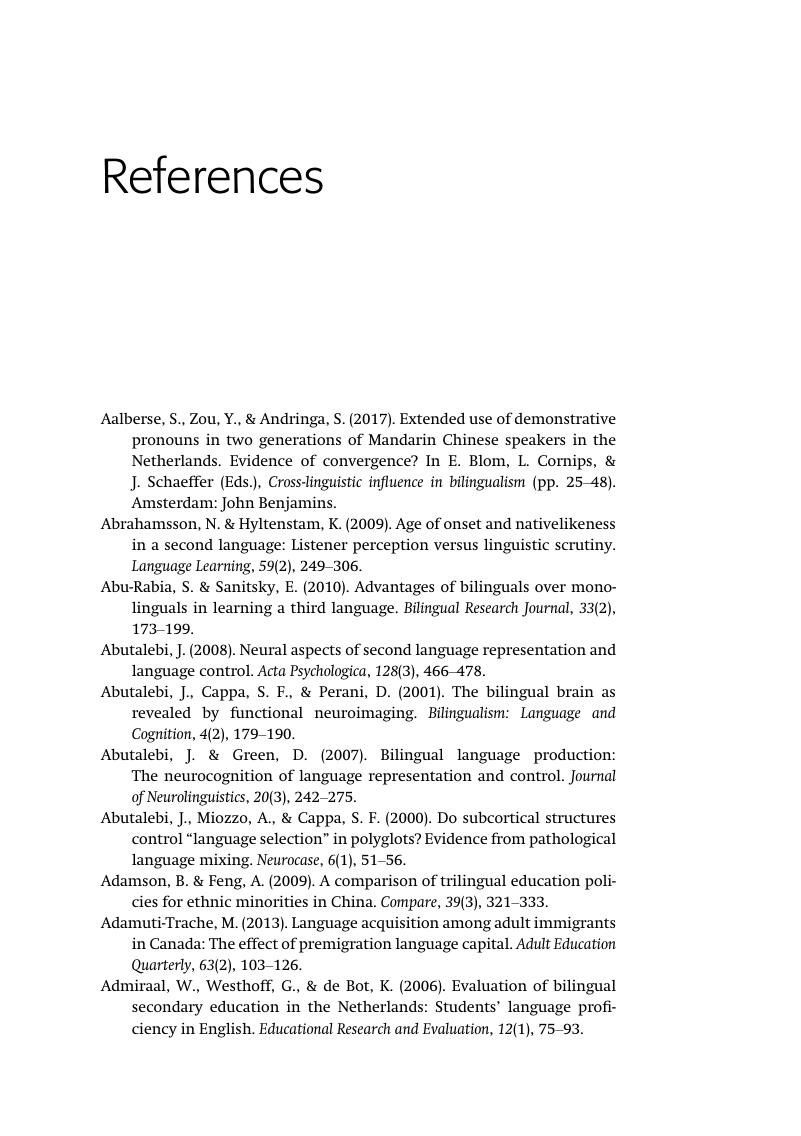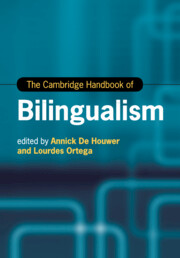Book contents
- The Cambridge Handbook of Bilingualism
- Cambridge Handbooks in Language and Linguistics
- The Cambridge Handbook of Bilingualism
- Copyright page
- Dedication
- Contents
- Figures and Tables
- Contributors
- Acknowledgments
- Common Abbreviations
- Introduction
- Part I Bilingual Learning and Use at Five Stages of Life
- Part II The Larger Contexts of Bilingualism
- Part III Contexts for Bilingual Learning and Unlearning
- Part IV The Dynamics of Bilingualism across the Lifespan
- Part V Bilingualism Research across Disciplines
- Part VI Bilingual Connections
- References
- Language Index
- Index of Place Names
- Subject Index
- References
References
Published online by Cambridge University Press: 09 November 2018
- The Cambridge Handbook of Bilingualism
- Cambridge Handbooks in Language and Linguistics
- The Cambridge Handbook of Bilingualism
- Copyright page
- Dedication
- Contents
- Figures and Tables
- Contributors
- Acknowledgments
- Common Abbreviations
- Introduction
- Part I Bilingual Learning and Use at Five Stages of Life
- Part II The Larger Contexts of Bilingualism
- Part III Contexts for Bilingual Learning and Unlearning
- Part IV The Dynamics of Bilingualism across the Lifespan
- Part V Bilingualism Research across Disciplines
- Part VI Bilingual Connections
- References
- Language Index
- Index of Place Names
- Subject Index
- References
Summary

- Type
- Chapter
- Information
- The Cambridge Handbook of Bilingualism , pp. 561 - 644Publisher: Cambridge University PressPrint publication year: 2018

